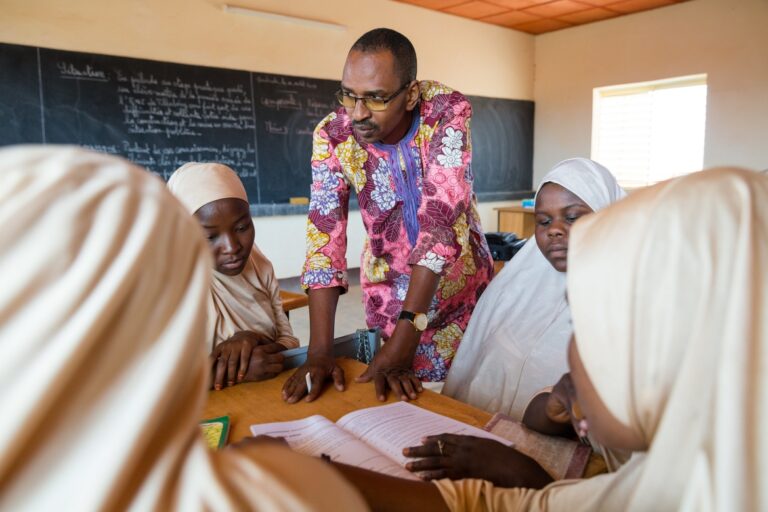By Lauren Libbert 17 JANUARY 2018
neak into the gym at any number of primary schools in the UK and you may see something rather strange going on: children lying on their backs, cuddling a soft toy on their tummy, making a soft ‘shhhh’ noise while breathing in and out.
You can just as easily find classrooms full of children sticking their tongues out and making a silly face at the teacher while loudly exhaling – a yogic breathing exercise known as ‘lion’s breath’ – before knuckling down to a complicated set of fractions.
Both practices are becoming increasingly common in the run of the school day as more schools introduce yoga and mindfulness classes either as part of the PE curriculum or as an optional lunchtime or afterschool club, positioning them as a nurturing and fun way for children to develop body awareness and learn tools to keep them calm, present and happy.
Christiane Kerr, founder of Calm for Kids (calmforkids.com), which runs yoga classes in schools all over the UK and has trained over 250 independent teachers who wish to bring yoga into their classrooms, has seen enquiries from schools double in the last year alone.
“The increasing amount of time children from aged eight or nine are now spending on screens means they have shorter attention spans,” Kerr explains. “Children just don’t get the space to be bored anymore. They get given a phone or device and there’s less outdoor play. What yoga does is bring them back into themselves a bit more so they can rest and digest instead of being distracted. After just a few sessions, teachers and parents say it makes a massive difference to their attention spans and they are more settled and calm.”
After doing 10 weeks of classroom yoga, a University of Massachusetts study published in 2014 showed overall improvements in primary school aged children’s social interactions with classmates, attention span, academic performance, ability to deal with stress and anxiety as well as boosting their confidence, self-esteem and overall mood.
In a similar 2016 study in southern Brazil, the children themselves were the greatest advocates for the practice.
“The change is that now I’m more happy, I don’t have nightmares anymore. I’m also not afraid,” said one budding yogi.
With nearly one in 10 children aged five to 16 affected by a mental health problem according to the Mental Health Foundation, most of us are fully apprised of the importance of nurturing our children’s mental health and wellbeing.
But is there a danger in the swing towards looking after our mental health, which is leaving children’s physical health compromised?
Recent figures from Public Health England show that four out of five primary school children do not currently get the recommended amount of exercise – at least 60 minutes of physical activity every day (ranging from moderate activity, such as cycling and playground games, to vigorous activity such as running and tennis).
With obesity rife, can yoga really be the answer?
Balancing on one leg and deep breathing may do wonders for improving posture and concentration but it’s hardly the equivalent of chasing a football round a field for an hour, or playing a long game of Stuck in the Mud, and there’s no way it can burn off the same amount of energy.
Craig Sheridan, GP and medical consultant for the Football Association, which often runs yoga classes on football training camps for its relaxation, calming and muscle-relaxing effects, agrees.
“Yoga might meet the moderate activity requirement but it’s likely to be better as an introduction for children who are not that active at the outset on the basis that something is better than nothing,” he says. “Certainly, on its own, yoga wouldn’t be adequate as an exercise for children, but should be more a part of the exercise package. Children need to be exposed to different activities and shouldn’t specialise too early and while yoga is great to mould co-ordination, flexibility and to develop strength, it’s not great for cardio and doesn’t really bring the heart rate up.”
Dr Stephanie Fitzgerald, a clinical psychologist who uses yoga therapeutically with children and adults (fitzgeraldpsychology.com), believes schools also have to be honest about what yoga provides; it is “not a substitute for physical activity,” she explains. “So much about relieving stress is about moving your body and releasing endorphins. Children have so much energy they need to burn and I wouldn’t want to see yoga replace PE in schools, but rather be used, for example, in an afternoon break time to sharpen their minds.”
Romila Bahl, a 47-year-old consultant in emergency medicine from North London, finds her eight year-old daughter’s yoga skills a great homework tool.
“If Kaylee is frustrated with her homework, I lay out a yoga mat in the living room and she does a few of the poses she learnt at lunchtime classes at school – for example, tree, where she holds one foot and balances on the other leg – and it works as an instant mood-changer,” says Romila. “Afterwards, she comes back to her homework and is ready to re-focus.”






